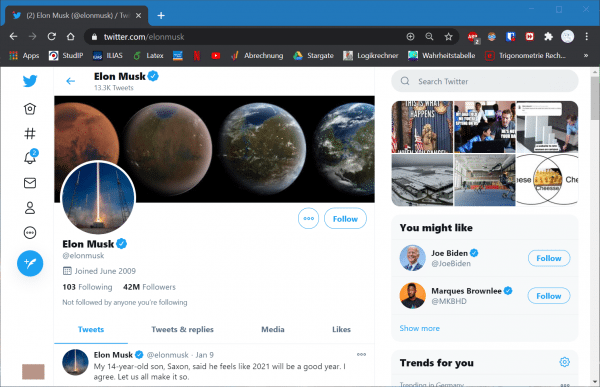The rise of social media has brought about a profound change in the way we interact with content and advertising around the world. More and more people are turning to so-called influencers on social media when it comes to content, consumer tips and entertainment. To understand why many brands are partnering with influencers to reach younger generations away from traditional advertising, it is important to understand what a social media influencer is and how influencer marketing works within a larger marketing ecosystem.
What is a social media influencer?
The term influencer comes from English and means something like "influencer". Social media influencers are users with a large fan base in the most important social networks, especially YouTube, Instagram, Snapchat, Facebook, Twitter or a combination thereof. The followers look at their photos and videos, share them and maybe even buy the products presented by the influencers.
There is no concrete number of followers that represents the tipping point between "popular user" and "social media influencer", but it is worth noting that there are certainly nuances and that the following of an influencer is an important factor for reach, engagement and Cost is..
From micro-influencers posting to a few thousand followers to the very biggest social media influencers sending updates to millions of followers on different platforms, influencers come in all shapes and sizes - known as influencer tiers ( see below). Most influencers start out by creating content on a specific interest or topic, such as games, lifestyle, makeup, fashion, or travel. By creating consistent and compelling content, influencers build a base of fans who are responsive to their content and search for entertainment and information on their social channels.
YouTubers, Instagramers, Snapchatters, and bloggers all create different types of content with different goals and intentions - but they are similar in that they are all trying to get their followers across a message that will generate interest, loyalty, and drive the audience to to come back.
Most of the time, you make your living from product placements. You present a product on your social media channel. The type of product depends entirely on the influencer and its content. A fashion blogger would possibly introduce clothes, and a game influencer would in turn introduce the latest gaming sensation.
Why are influencers so important on social media platforms?
Influencers enable brands to target specific sections of the population. They allow brands to appeal to specific target groups with tailored messages.
However, one key to fully understanding marketing with social media influencers is the fact that most influencer partnerships don't center around an influencer delivering the brand message.
One of the main draws of a social media influencer is the authenticity that fans expect and love in all of the influencer's content. The most successful social media influencer campaigns often put this authenticity at the forefront and allow influencers to leverage their followers' trust in their work by talking about brands in their own way.
Another key element is direct communication. Although this point is related to authenticity, the way in which information and messages are conveyed by an influencer is crucial. Messages from influencers reach the audience directly, and they come from a voice that the audience already knows, trusts, and is ready to engage with..
What are the different types of influencers?
We can divide influencers into different categories based on the number of their followers, type of content, industry, and level of influence. These look like this:
1. Mega influencers
Mega influencers are those who have massive numbers of social media followers. While there is no widely accepted rule that draws the lines between the different types of influencers. However, mega influencers typically have more than a million followers on at least one social channel.
The majority of mega influencers are celebrities like movie stars, singers or athletes who did not earn their fame online. Nonetheless, some mega influencers have built a large following through their online activities. For example, Elon Musk , the co-founder of Tesla and SpaceX, is a mega influencer with over 40 million followers on Twitter.
Only big brands usually work with mega influencers as they cost a lot.

2. Macro influencers
Macro influencers are very similar to mega influencers. However, unlike mega influencers, they become known via the Internet. They can be vloggers, podcasters, or influential bloggers with a large following. A macro influencer's number of followers is usually somewhere between 100 thousand and a million.
Carys Whittaker , a lifestyle and fitness blogger, is a perfect example of a macro influencer. She has over 700,000 followers on Instagram..

3. Micro-influencers
With a followership of 1,000 to 100,000, micro-influencers are ordinary people who are known for their knowledge or expertise in a topic. They are usually working on a topic and using their knowledge or skills to become thought leaders.
But we can't just determine the level of influence based on the number of followers. It is the interaction an influencer has with their followers that determines their persuasiveness. Like macro or mega influencers, micro influencers can be picky about who to work with.
Micro influencers are much more effective for small businesses than macro or mega influencers, as brands that work with micro influencers can expect an average conversion rate of 20%.
4. Nano Influencers
Nano influencers have grown in prominence recently thanks to the social media explosion in the marketing industry. These people have a small number of followers but are experts in a highly specialized field. In most cases, nano influencers have more than a thousand followers on at least one social media platform.
But this rather limited number of followers would be willing to engage with and listen to the nano influencer. Companies that manufacture or sell niche products should consider building relationships with relevant nano-influencers.